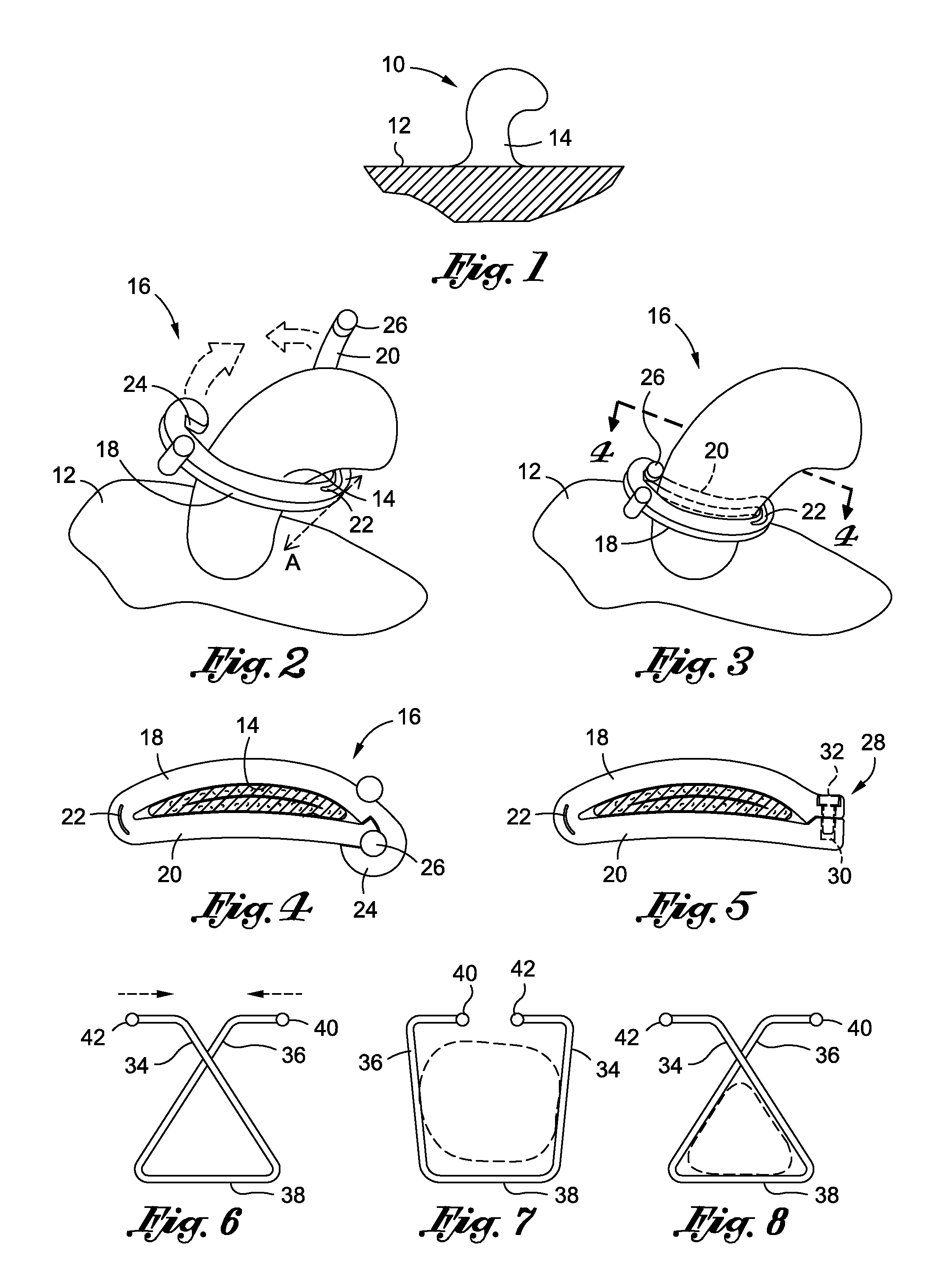Skin tag removal system
a skin tag and removal system technology, applied in the field of skin tag removal, can solve the problems of skin tags that interfere with shaving and other grooming rituals, waste of medical personnel and resources, and high cost, and achieve the effect of facilitating the application of compressive force or pressure, reducing or restricting the blood flow required to sustain the skin tag
- Summary
- Abstract
- Description
- Claims
- Application Information
AI Technical Summary
Benefits of technology
Problems solved by technology
Method used
Image
Examples
Embodiment Construction
[0027]The above description is given by way of example, and not limitation. Given the above disclosure, one skilled in the art could devise variations that are within the scope and spirit of the invention disclosed herein, including various ways of devising a skin tag removal device configured to be oriented in a closed position and an open position. Further, the various features of the embodiments disclosed herein can be used alone, or in varying combinations with each other and are not intended to be limited to the specific combination described herein. Thus, the scope of the claims is not to be limited by the illustrated embodiments.
[0028]The device of the present invention allows for the removal of skin tags using a pair of members used to press against the base of the skin tag to reduce or restrict the blood flow to the skin tag. The different components form part of a device which may be placed adjacent to the skin, and in particular around a base of the skin tag to thus cut o...
PUM
 Login to View More
Login to View More Abstract
Description
Claims
Application Information
 Login to View More
Login to View More - R&D
- Intellectual Property
- Life Sciences
- Materials
- Tech Scout
- Unparalleled Data Quality
- Higher Quality Content
- 60% Fewer Hallucinations
Browse by: Latest US Patents, China's latest patents, Technical Efficacy Thesaurus, Application Domain, Technology Topic, Popular Technical Reports.
© 2025 PatSnap. All rights reserved.Legal|Privacy policy|Modern Slavery Act Transparency Statement|Sitemap|About US| Contact US: help@patsnap.com


